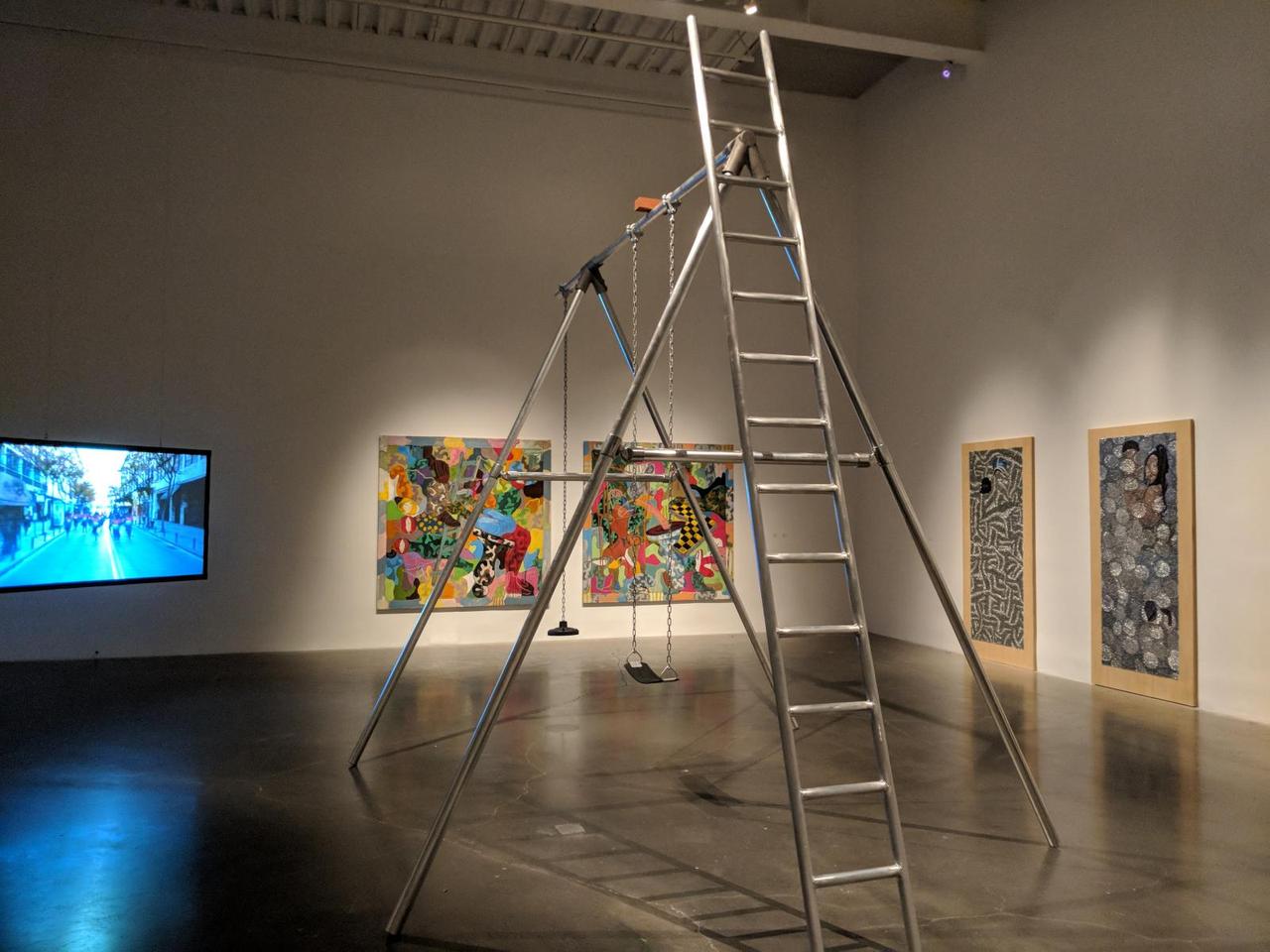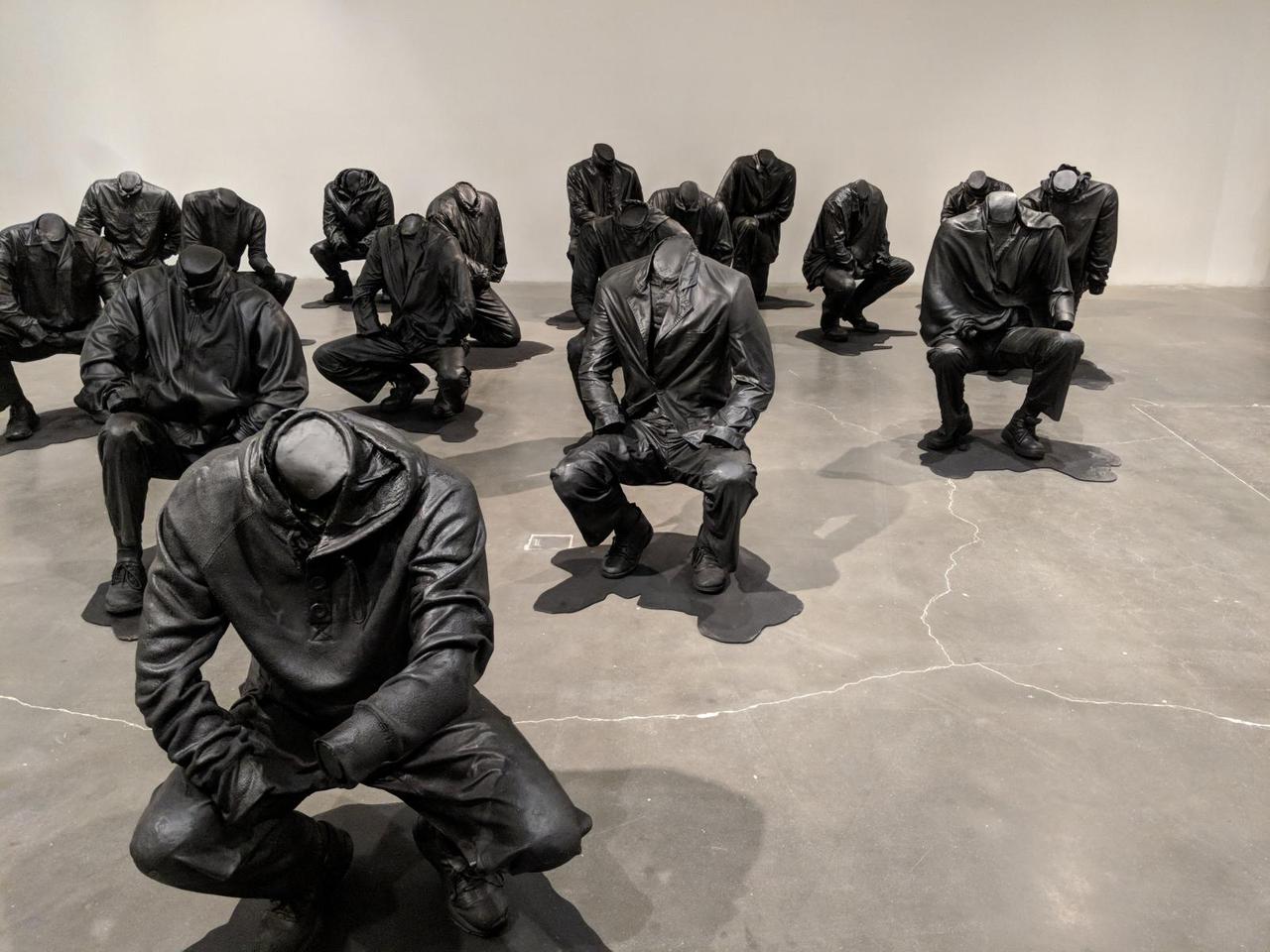Songs for Sabotage
The Songs for Sabotage exhibition at the New Museum presents the work of a collection of young artists from around the world. This exhibition attempts “a call for action, an active engagement, and an interference in political and social structures [1],” but only some of the work presented seemed to relate to that goal. Nevertheless, there are many talented artists included presenting a diverse collection of work.
Diamond Stingily’s E.L.G. (2018) addresses our social problems with a large metal swing set with a single swing. On the support beam directly above the swing is a single brick, positioned in such a way to threaten someone below if someone were to use the swing. Given that children most commonly use swing sets, it seems to reference the danger children face in the world today. The work also includes a metal ladder on the side of the swing set, leading to nowhere. I understood this to represent the lack of a clear future children face as they climb the metaphorical “ladder of success.” Stingily’s social and economic background from growing up in Chicago influences her work [2].

E.L.G. (2018) by Diamond Stingily
Senzenina (2018) by Haroon Gunn-Salie is a set of 17 humanoid sculptures made without heads or hands set in the middle of a room. The figures are positioned kneeling or about to kneel and arranged in a triangle shape. When I saw it I thought of bowling pins, about to be knocked down by a bowling ball. After reading the piece’s description on the wall, I learned that this is a recreation of the Marikana massacre in South Africa on Aug. 16, 2012, where unionized miners demanding a pay increase were gunned down by police. The artist used police footage of the moment before police open fire, killing them all. When I learned this I remembered my thought of bowling pins and felt sad.

Senzenina (2018) by Haroon Gunn-Salie
Finitude (2018) by Lydia Ourahmane is a plaster wall made for this exhibition located between two floors. Ominous sounds emanate from within the wall. The vibrations from the sound slowly destroy the piece, resulting in pieces of cracked plaster accumulating on the floor. This work seems to speak to the gradual and irreversible destruction we are inflicting on the world.
Other work that I liked a lot are Tomm El-Saieh’s Walking Razor (2017-18) and Tablet (2017-18), two large and colorful abstract paintings. I found both to be particularly appealing, but I can’t relate either to the stated theme of the show. I also liked Claudia Martinez Garay’s Cannon Fodder / Cheering Crowds (2018). This work is a large number of pieces of wood painted with muted colors and simple squares and shapes mounted on the wall. Again, I liked it but felt no call to action.
The New Museum’s Songs for Sabotage exhibition includes the work of young artists and attempts a “call for action” on the social problems of our day. Although some of the artists did address social causes with their work, I found that much of the work didn’t live up to that goal. Still, it is a fine exhibition of the work of talented artists from around the world.
[1] New Museum. “2018 Triennial: Songs for Sabotage.” New Museum. Web. 17 Feb. 2018.
[2] Wikipedia contributors. "Diamond Stingily." Wikipedia, The Free Encyclopedia. Wikipedia, The Free Encyclopedia, 7 Feb. 2018. Web. 17 Feb. 2018.
[3] Indrisek, Scott. “The New Museum Triennial Asks: Can Artists Sabotage the Status Quo?” Artsy. 12 Feb. 2018. Web. 17 Feb. 2018.
[4] Fox, Dan. “2018 Triennial: Songs for Sabotage.” Frieze. 14 Feb. 2018. Web. 17 Feb. 2018.
Comments